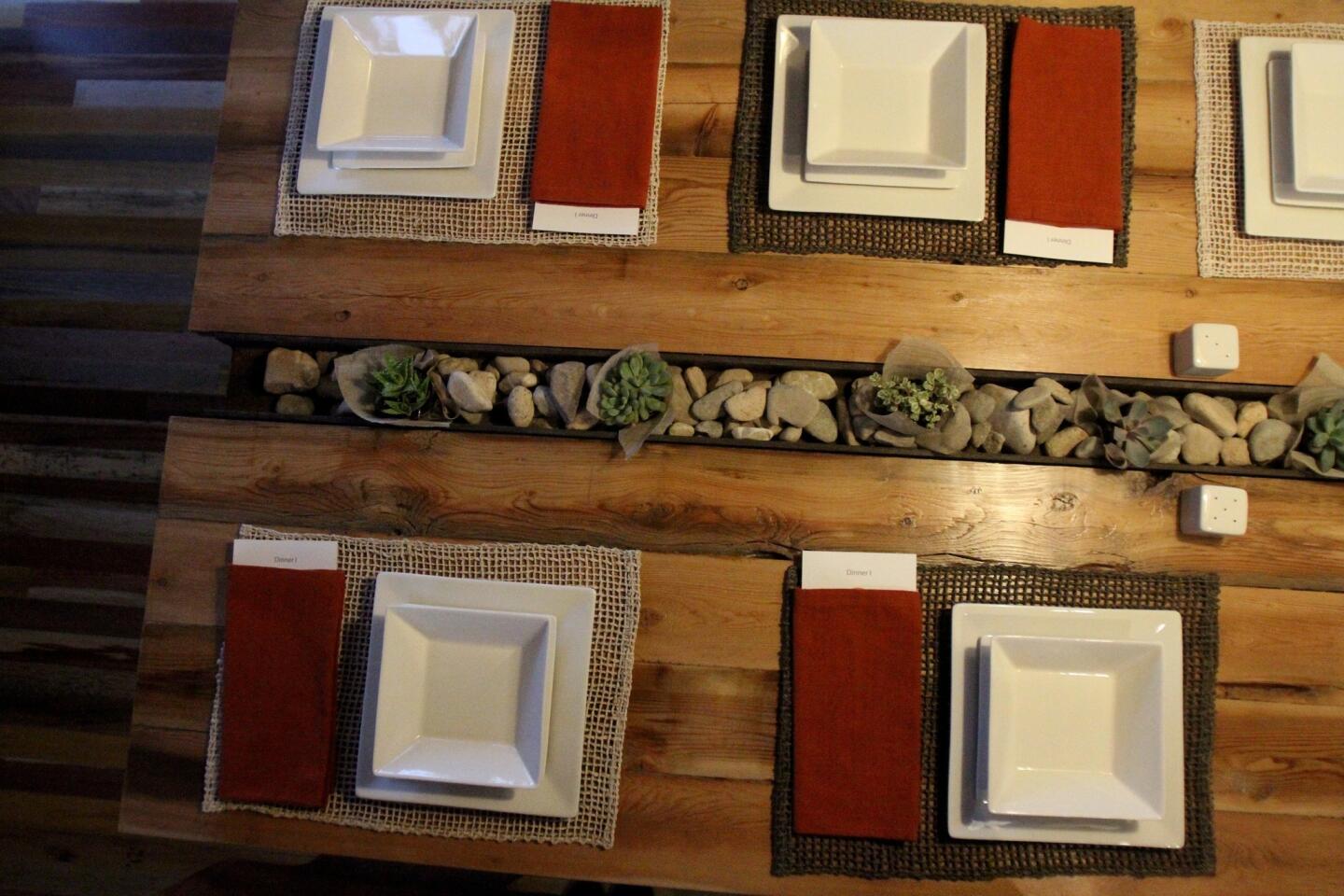UNLV solar house wins for market appeal, Norwich most affordable
- Share via
The University of Nevada Las Vegas won the market appeal contest Thursday at the 2013 Solar Decathlon, edging out Vienna University of Technology, Stanford and Czech Technical University in one key phase of the 19-team competition to build the sustainable house of the future.
UNLV scored 94 out of a possible 100 points allotted for market appeal with a smartly designed house that blends urban modern with desert rustic.
Results also were announced in the affordability contest, another one of 10 categories in which students are competing. Norwich University in Vermont, Stanford and Team Kentucky/Indiana (consisting of students from the University of Louisville, Ball State and the University of Kentucky) all scored the maximum 100 points for conceiving houses with construction costs of $250,000 or less. The Norwich house came in with the lowest estimated cost, $168,385.
SOLAR DECATHLON 2013: Team profiles, contest results, design trends
The judging results for architectural merit and communication (including website design and onsite explanation of the house features) will be announced Friday. Judging in the engineering category will be announced last, on Saturday, when the overall Solar Decathlon winner will be crowned.
The Thursday results, combined with all the points awarded previously for efficiency in heating and cooling, heating water, running efficient appliances and other contests, put Stanford in first place, following closely by UNLV, Middlebury and Team Ontario, whose design features automated window shades installed outside, not inside, windows. The U.S. Department of Energy, which runs the Solar Decathlon, posts current standings online.
It’s easy to see why the UNLV house, dubbed DesertSol, won for market appeal. Clad in reclaimed wood and laser-cut steel screens with the pixilated pattern of desert mesquite trees, the exterior would fit not only the desert surroundings for which it was designed but also an architecturally adventurous L.A. neighborhood like Venice.
Inside, the steel window framing that punctuates the facades turns out to have a practical purpose: daylighting for the kitchen counter so cooks can see what they’re doing without flipping on lights.
Extra-thick insulated walls and controlled use of glass on the front of the house not only deflect heat and keep the interior cool but also create a quiet environment inside. Sound insulation panels incorporated into an entertainment system wall also help.
The flooring was constructed with reclaimed warehouse pallets, and the kitchen table -- complete with a petite trough for decorative succulents -- also was made of scrap materials.
“We went to the boneyard of the Bureau of Land Management,” team spokeswoman Alexia Chen said, noting that the BLM owns the majority of all land in Nevada. “They were like, ‘Come look at our material and take whatever you want.’ We got wood, rusted steel I-beams.”
The houses consists of two halves, with the sleeping quarters and bathroom nicely separated from the living area and kitchen by a glassed-in transition zone that provides a nice view: a rock garden where rain from both sides of the house drains and collects in a hidden gray-water tank. It’s a nice reminder of what makes all the houses at the Solar Decathlon worth taking a look at.
The Solar Decathlon -- the 19 houses plus a green living expo -- will be open 11 a.m. to 7 p.m. daily through Sunday. Look for more coverage, including the remaining contest results and overall winner announcement, on our Solar Decathlon main page.
Twitter: @cnakano | Email: craig.nakano@latimes.com
JOIN THE CONVERSATION:@latimeshome | pinterest.com/latimeshome | facebook.com/latimeshome | facebook.com/latimesgarden
Sign up for Essential California
The most important California stories and recommendations in your inbox every morning.
You may occasionally receive promotional content from the Los Angeles Times.





